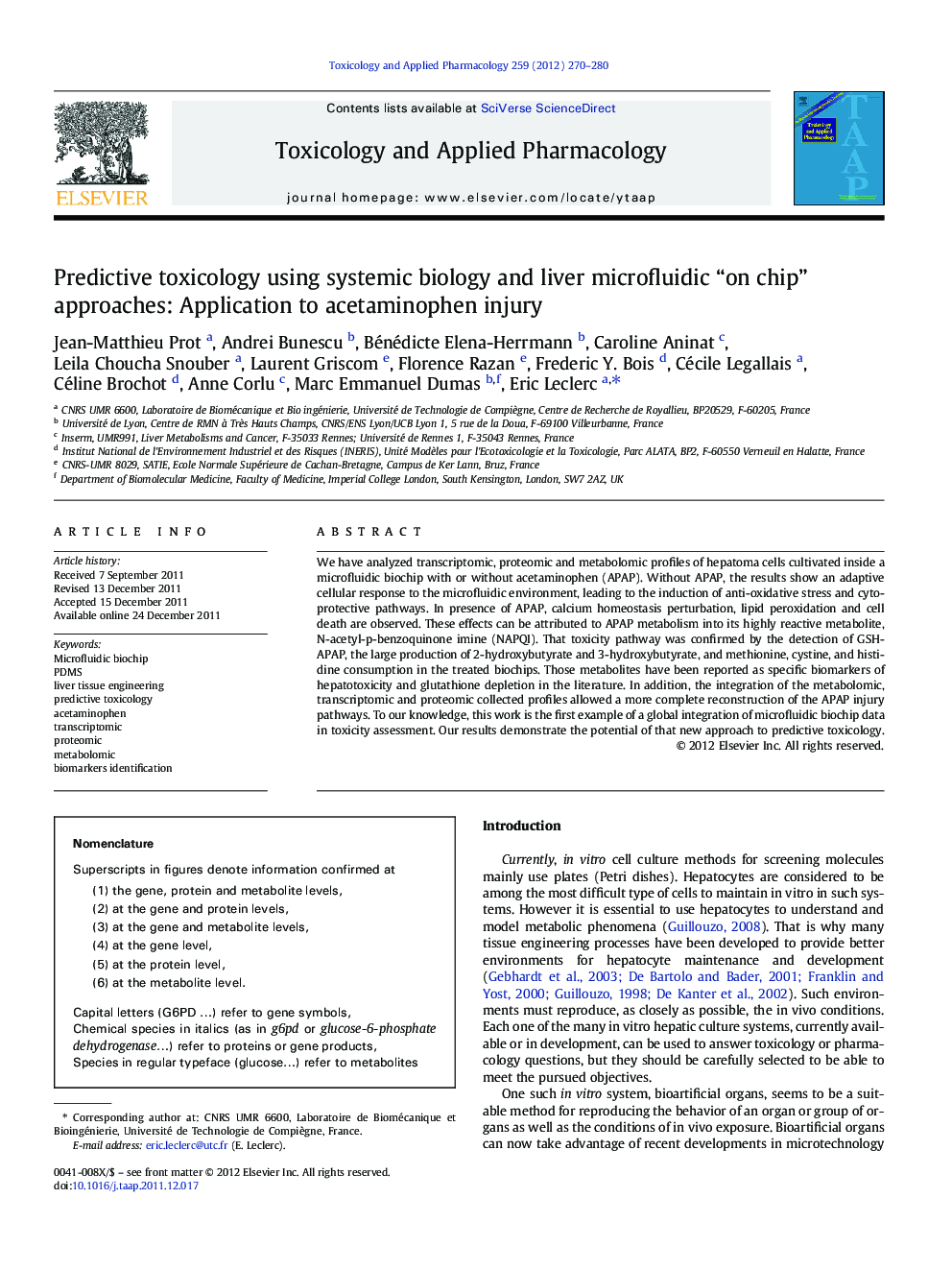| Article ID | Journal | Published Year | Pages | File Type |
|---|---|---|---|---|
| 2569073 | Toxicology and Applied Pharmacology | 2012 | 11 Pages |
We have analyzed transcriptomic, proteomic and metabolomic profiles of hepatoma cells cultivated inside a microfluidic biochip with or without acetaminophen (APAP). Without APAP, the results show an adaptive cellular response to the microfluidic environment, leading to the induction of anti-oxidative stress and cytoprotective pathways. In presence of APAP, calcium homeostasis perturbation, lipid peroxidation and cell death are observed. These effects can be attributed to APAP metabolism into its highly reactive metabolite, N-acetyl-p-benzoquinone imine (NAPQI). That toxicity pathway was confirmed by the detection of GSH-APAP, the large production of 2-hydroxybutyrate and 3-hydroxybutyrate, and methionine, cystine, and histidine consumption in the treated biochips. Those metabolites have been reported as specific biomarkers of hepatotoxicity and glutathione depletion in the literature. In addition, the integration of the metabolomic, transcriptomic and proteomic collected profiles allowed a more complete reconstruction of the APAP injury pathways. To our knowledge, this work is the first example of a global integration of microfluidic biochip data in toxicity assessment. Our results demonstrate the potential of that new approach to predictive toxicology.
► We cultivated liver cells in microfluidic biochips ► We integrated transcriptomic, proteomic and metabolomics profiles ► Pathways reconstructions were proposed in control and acetaminophen treated cultures ► Biomarkers were identified ► Comparisons with in vivo studies were proposed.
